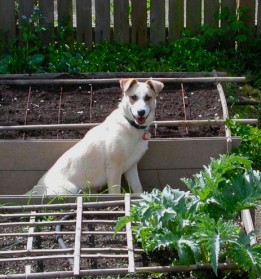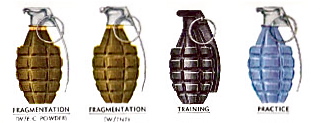 I’ve been thinking a lot about dog friendly gardening this summer because I’ve been day-dreaming about how I would design a new, larger garden than the one we have now. So I’ve been imagining what would make a perfect garden. I love being outside with Saffron and I want a yard that will be a nice place for people and dogs. What’s the garden of your dreams?
I’ve been thinking a lot about dog friendly gardening this summer because I’ve been day-dreaming about how I would design a new, larger garden than the one we have now. So I’ve been imagining what would make a perfect garden. I love being outside with Saffron and I want a yard that will be a nice place for people and dogs. What’s the garden of your dreams?
A lovely garden and dogs can actually co-exist happily. It just takes a little planning, maybe a few changes or compromises, and some consistent training. A good place to start is to look at your yard through your dog’s eyes. How does your dog use the yard? Does she like to patrol the perimeter? Does he like to sit on the deck and survey his domain? Does she have particular routes or places to lounge? Do you have a digger? Or a dog that insists on lounging in the coolest part of the yard, regardless of what’s planted there? Try working with your dog’s behavior by accepting it or redirecting it instead of fighting it. And try to keep them out of trouble before they ever get into it.
Some of the things on the wish list for my dream garden are:
- Space between plantings and the fences so Saffron can patrol the yard the way she’d like to without disturbing the flower beds.
- A high spot with a good view of the yard. She likes to check the yard before the goes down off the porch—checking for raccoons and squirrels, but she can only see a small portion of our current yard.
- I wish Saffron had a long, barrier-free stretch where she could really run hard and some changes in elevation because she loves going up & down hills.
- Of course, it would have to have a digging pit, which I’ve previously written about.
- I’d also like a specific, out-of-the-way place for her to “do her thing”—that’s her “go potty” cue. An area defined by a border with good drainage and covered with gravel or wood chips for easy clean up and that can be hosed down.
Here are some tips I’ve used to solve problems that arise from gardening with a dog:
- How to keep a dog out of a bed where you’ve applied compost, manure, or organic fertilizer—all of which smell divine to our dog? I’ve had success with one or a combination of the following:
- putting chicken wire over the soil
- liberally sprinkling crushed red pepper flakes (which you can get quite cheap at Costco)
- temporarily erecting inexpensive folding fence borders that you can find at home & garden stores
- If your dog has worn a path through your lawn or flowerbed, consider turning it into an real path with stepping stones or pavers.
- To keep male dogs from marking plants or trees, provide another focal point for the dog. Dogs very often mark upright objects that are closest to their path, especially at corners. Place a rock, log, planter or some other non-plant object where the dog will encounter it first before it gets to the plant or tree you want to protect.
Don’t give up on your yard or your dog! Check out these links for many more ideas on dog friendly garden design and problem solving:
- A comprehensive list of tips, training ideas, and ways to make your garden safe for your dog
- An excellent article from Sunset magazine


